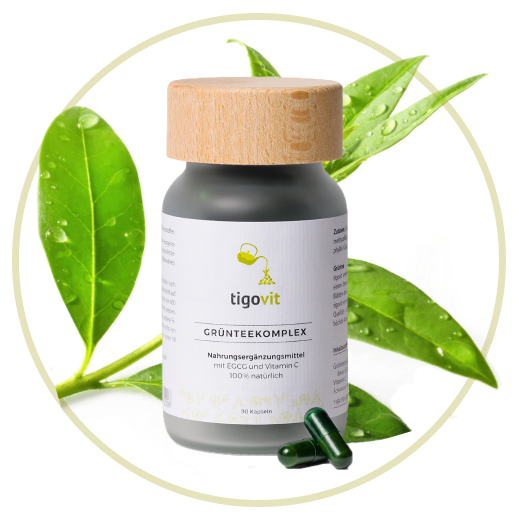
Autorin: Nina Devrnja, PhD der Biologie
Silizium ist nach Sauerstoff das zweithäufigste Element in der Natur und das dritthäufigste Spurenelement im menschlichen Körper (8). In reiner Form kommt Silizium in der Natur selten vor, sondern hauptsächlich als sauerstoffhaltige Kieselsäure (Siliziumdioxid, SiO2) und Silikate (andere Verbindungen, die Silizium und Sauerstoff enthalten). Die Verwendung von Kieselsäure ist in der Lebensmittel- und Getränkeindustrie weit verbreitet, wo sie als Lebensmittelzusatzstoff, Antischaummittel oder Teigmodifikator eingesetzt wird.
Getränke (Wasser, Kaffee, Bier) sind der Hauptlieferant von Kieselsäure für die menschliche Ernährung (bis zu 50 %), gefolgt von Getreide und Getreideprodukten, Obst und Gemüse (1, 2). Die Aufnahme von Kieselsäure über die Ernährung beträgt in der westlichen Bevölkerung ca. 20-50 mg/Tag, während die Schätzung für China oder Indien bei ca. 200 mg/Tag liegt (3, 4, 5).
Welche Vorteile hat Silicium für die Gesundheit?
Obwohl Silizium lange Zeit nicht als prominenter Nährstoff für den Menschen anerkannt war, gibt es heutzutage ein wachsendes Interesse an seinen positiven Auswirkungen auf die menschliche Gesundheit. Es gibt Studien, die eine mögliche Rolle von Silizium bei Arteriosklerose und Bluthochdruck, Diabetes, Knochen- und Bindegewebserkrankungen, neurodegenerativen Krankheiten (Alzheimer, Parkinson) und anderen Beschwerden, die besonders in der älteren Bevölkerung auftreten, unterstützen.
Im menschlichen Körper ist Silizium in einer Konzentration von 1-10 ppm in Haaren, Nägeln und der Epidermis der Haut vorhanden (9). Der größte Teil des im Blut vorhandenen Siliziums wird von den Nieren gefiltert. Die Siliziumwerte im Blut korrelieren mit den Werten im Urin (24).
Silizium ist ein Mineral, das eine wichtige Rolle bei der Knochenbildung spielt. Osteoporose ist eine der Hauptursachen für Mortalität bei älteren Menschen. Sie wird als fortschreitende Skelettstörung definiert, die durch eine geringe Knochenmasse und eine Verschlechterung der Knochen gekennzeichnet ist (10). Kalzium und Vitamin D standen bisher im Mittelpunkt der ernährungsbedingten Prävention von Osteoporose, aber auch die Supplementierung von Silizium wurde verstärkt erforscht, nachdem mehrere Studien an Tieren Dysfunktionen in Knochen und Bindegewebe gezeigt hatten (11, 12).
Die Studie von Moukarzel et al. hat eine direkte Korrelation zwischen der Siliziumzufuhr und der Knochenmineraldichte gezeigt (13). Eine weitere klinische Studie (Eisinger und Clairet (14)) bestätigt, dass die Verabreichung von diätetischem Silizium eine signifikante Zunahme der Knochenmineraldichte des Oberschenkels bei Frauen induziert. Eine andere Studie, die 2005 veröffentlicht wurde, zeigte einen Anstieg der Knochenbildungsmarker, d.h. der Kollagensynthese, und eine signifikante Erhöhung der Knochenmineraldichte (15).
Die Beziehung zwischen Östrogen, der Knochengesundheit und dem Siliziumstoffwechsel wurde von Macdonald und seinen Mitarbeitern erforscht. Sie kamen zu der Feststellung, dass diätetisches Silizium mit Östrogen interagiert und damit die Knochengesundheit positiv beeinflusst (16).
Einige Forscher vermuten, dass Kieselsäure gegen Aluminium schützt, da sie die Aufnahme von Aluminium reduziert und/oder die Ausscheidung erhöht. Eine nachfolgende Studie zeigte, dass das Trinken von bis zu 1 L siliziumreichem Mineralwasser täglich über 12 Wochen die Ausscheidung von Aluminium im Urin sowohl in der Kontrollgruppe als auch in der Gruppe der Alzheimer-Patienten förderte. Dabei wurde eine Steigerung der kognitiven Leistung bei 20% der Teilnehmer festgestellt (17).
Hilft Silizium beim Haarwachstum?
Kollagenfasern sind wesentliche Bestandteile des Bindegewebes und sind in großen Mengen in der Haut, den Knochen und Gelenken vorhanden (23). Silizium wird bereits chirurgisch angewendet, beispielsweise beim Tissue Engineering zur Regeneration von Geweben. Silizium ist entscheidend für die optimale Synthese von Kollagen, und ein Siliziummangel könnte zu einer verminderten Hautelastizität und Wundheilung führen.
Es ist auch ein entscheidendes Element für gesunde Haare, denn ein höherer Siliziumgehalt in der Haarfaser führt zu weniger Haarausfall und erhöhtem Glanz. Silizium ist auch ein wichtiges Mineral in den Nägeln. Indem es die Qualität der Nägel verbessert, wirkt es auch indirekt als Schutz gegen Nagelinfektionen (18). Degenerative Veränderungen, die mit dem Altern einhergehen und durch UV-Strahlung, Rauchen, Umweltverschmutzung und unzureichende Ernährung verursacht werden, führen zu einer starken Abnahme von Kollagen und Elastin (20).
Eine Studie (Akazaki und Mitarbeiter) zeigte, dass der Kollagenabbau in der Haut nach dem 21. Lebensjahr etwa 1 % pro Jahr beträgt, was zu einem Elastizitätsverlust der Haut, einer Verringerung der Dicke und der Tiefe der Falten führt (21). Leider sind diese Veränderungen nach der Menopause noch ausgeprägter und verursachen etwa 30% des Kollagenverlustes der Haut in den ersten 5 Jahren, was auch mit der altersbedingten Abnahme der Knochenmineraldichte zusammenhängt (22).
Da Silizium wichtig ist für die Kollagensynthese ist, Hydroxylierungsenzyme aktiviert, die für die Bildung des Kollagennetzwerks wichtig sind, und die Festigkeit und Elastizität der Haut verbessert, kann es als ein potenzielles Mittel zur Verbesserung und Vorbeugung der Hautalterung dienen.
Verwechseln Sie Silizium aber nicht mit Silikon, einer Gruppe von plastikähnlichen Materialien, die Silizium, Sauerstoff und andere Chemikalien enthalten. Silikon wird zur Herstellung von Brustimplantaten, medizinischen Schläuchen und anderen medizinischen Geräten verwendet.
Wie sicher sind Nahrungsergänzungen mit Silizium?
Bedeutende Mengen an Silizium sind in einigen Lebensmitteln vorhanden, aber manchmal liegt es in einer unlöslichen Form vor und kann nicht direkt im Magen-Darm-Trakt aufgenommen werden. Es gibt verschiedene Formen von Silizium-Nahrungsergänzungsmitteln, aber mit großen Unterschieden in der Bioverfügbarkeit von Silizium, die je nach chemischer Form von weniger als 1% bis 50% reichen (6, 19).
Silizium-Nahrungsergänzungsmittel enthalten in der Regel Silizium in Form von Orthokieselsäure oder anderen Formen, die vermutlich so modifiziert sind, dass sie wasserlöslich, resorbierbar und bioverfügbar sind.
Erhöhte Bioverfügbarkeit von Silizium in Kombination mit MTC-Öl
Wie bereits erwähnt, liegt elementares Silizium in erster Linie als Siliziumdioxid/Kieselsäure vor. Da es in Wasser schlecht löslich ist, hat es eine schlechte biologische Verfügbarkeit. Eine Supplementierung mit MCT-Öl ist eine wertvolle Möglichkeit, die Bioverfügbarkeit von Silizium zu erhöhen.
MCT-Öl ist ein Nahrungsergänzungsmittel, das aus mittelkettigen Triglyceriden besteht, den Fetten, die natürlich in Palm- und Kokosnussöl vorkommen. MCTs sind leichter, gut verdaulich und werden schneller verstoffwechselt, weil ihre Moleküle im Verhältnis zu den anderen Fettarten kleiner sind.
MCT-Öl könnte zudem eine gute Energiequelle sein. Es enthält Fettsäuren, die das Wachstum von Bakterien und Hefe in vitro reduzieren, verfügt über eine potenzielle antimikrobielle Aktivität (25, 26) und könnte auch bei der Kontrolle des Blutzuckerspiegels helfen (27).
Bioverfügbarkeit und verzögernde Wirkung durch Oberflächenaktivierung
Das SAM-Verfahren (Surface-Activated-Minerals) erweckt Siliziumdioxid wieder zum Leben. Eine neue, faszinierende Technologie des Instituts Dr. Rilling Healthcare GmbH ermöglicht es, Silizium durch Aktivierung der Oberfläche in seine ursprüngliche, kleinmolekulare Form zu überführen. Bildlich gesprochen wird das Reaktionspotential durch den Abbau des makroskopischen Minerals Siliziumdioxid in Kieselsäure freigesetzt.
Dadurch vergrößert sich die Oberfläche des Siliziumdioxids erheblich und im Kontakt mit Wasser oder Körperflüssigkeiten können sich diese Einheiten als Kieselsäuremoleküle auflösen. Die daraus resultierende hohe Bioverfügbarkeit des SAM-Siliziums in der Zelle und im Gewebe wird auf diese Weise ermöglicht und seine Wirksamkeit spürbar erhöht.
Das Geheimnis des Erfolgs: Das mit diesem speziellen Verfahren verarbeitete Silizium wird in bioaktives Silizium mit hoher Oberflächenaktivität umgewandelt. Dadurch wird die Kieselsäure im Körper tatsächlich aufgenommen und kann in den Zellen wirken. Biologische Prozesse wie Zellaufbau, Zellerneuerung und Zellstoffwechsel können so aktiviert und stabilisiert werden.
Was die Sicherheit von Silizium betrifft, so hält die FDA Siliziumdioxid im Allgemeinen für den menschlichen Verzehr für sicher.
Quellen:
- Jugdaohsingh, S. H. Anderson, K. L. Tucker, H. Elliott, D. P. Kiel, R. P. Thompson, J. J. Powell, Am. J. Clin. Nutr. 2002, 75, 887–893.
- Chen, P. Cole, L. Wen, Comm. Int. Nutr. 1994, 124, 196–201.
- Jugdaohsingh, J. Nutr. Health Aging 2007, 11, 99–110.
- Barel, M. Calomme, A. Timchenko, K. De Paepe, N. Demeester, V. Rogiers, P. Clarys, D. Vanden Berghe, Arch. Dermatol. Res. 2005, 297, 147–153.
- Jugdaohsingh, S. H. Anderson, K. L. Tucker, H. Elliott, D. P. Kiel, R. P. Thompson, J. J. Powell, Am. J. Clin. Nutr. 2002, 75, 887–893.
- L. Smith, Trace Elements in Man and Animals, Vol. 8, Eds M. Anke, D. Meissner, C. F. Mills, Kluwer, New York, 1993, 1091–1093.
- Russell, Rheum. Dis. Clin. North Am. 2010, 36, 665–680.
- Carlisle, J. Nutr. 1980, 110, 352–359.
- Carlisle, J. Nutr. 1980, 110, 1046–1056.
- Moukarzel, M. Song, A. Buchman, M. Ament, J. Am. Coll. Nutr. 1992, 11, 584.
- Eisinger, D. Clairet, Magnesium Res. 1993, 6, 247–249.
- Spector, M. Calomme, S. Anderson, R. Swaminathan, R. Jugdaohsingh, C. Van Hoorebeke, J. Powell, J. Bone Mineral Res. 2005, 20, S172.
- Macdonald, A. Hardcastle, R. Jugdaohsingh, W. Fraser, D. Reid, J. Powell, Bone 2012, 50, 681–687.
- Davenward, P. Bentham, J. Wright, P. Crome, D. Job, A. Polwart, C. Exley, J. Alzheimer’s Dis. 2013, 33, 423–430.
- Wickett, E. Kossmann, A. Barel , N. Demeester, P.Clarys, D. Vanden Berghe, et al. Arch Dermatol Res. 2007, 299, 499-505.
- Sripanyakorn, R. Jugdaohsingh, W. Dissayabutr, SH. Anderson, RP. Thompson, JJ. Powel, Br J Nutr. 2009, 102, 825-34.
- Fanian, S. Mac-Mary, A. Jeudy, T. Lihoreau, R. Messikh, JP. Ortonne, et al. Clin Interv Aging. 2013, 8, 1527-37.
- Akazaki, H. Nakagawa, H. Kazama, O. Osanai, M. Kawai, Y. Takema, et al. Br J Dermatol. 2002, 147, 689-95.
- Sumino, S. Ichikawa, M. Abe, Y. Endo, O. Ishikawa, M. Kurabayashi, J Am Geriatr Soc. 2004, 52, 945-9.
- Shuster S, Med Hypotheses. 2005, 65, 426-32.
- Berlyne, AJ Adler, N. Ferran, S. Bennett, J. Holt. Silicon metabolism, Nephron, 1986, 43, 5-9.
- Ogbolu, AA. Oni, OA. Daini, AP. Oloko, J Med Food. 2007, 10, 384-7.
- Shilling, L. Matt, E. Rubin, MP. Visitacion, NA. Haller, SF. Grey, CJ, J Med Food. 2013, 16, 1079-85.
- Eckel, AS. Hanson, AY. Chen, JN. Berman, TJ. Yost, EP. Brass, Diabetes. 1992, 41, 641-7.
Photos:
Averie woodard on Unsplash
Tim Mossholder von Pexels






